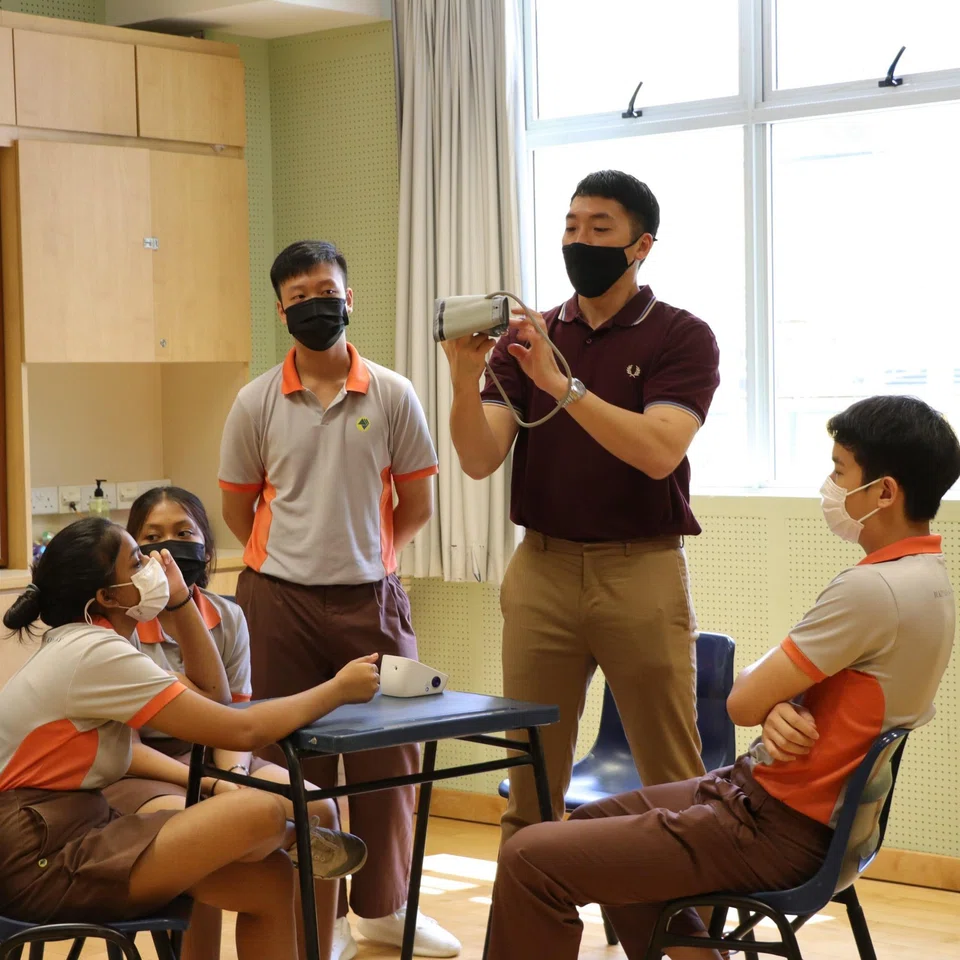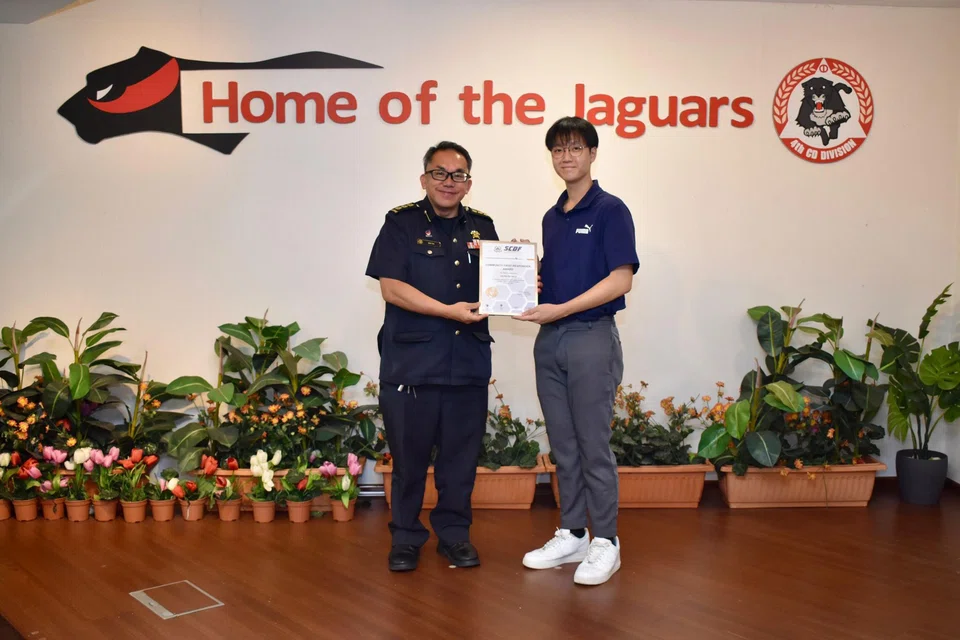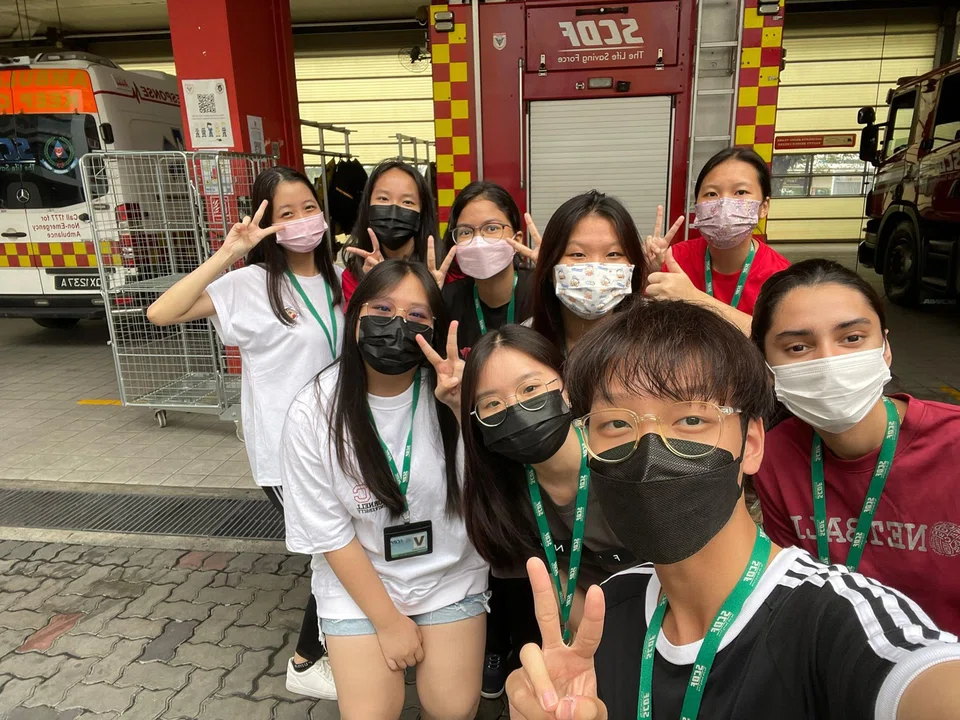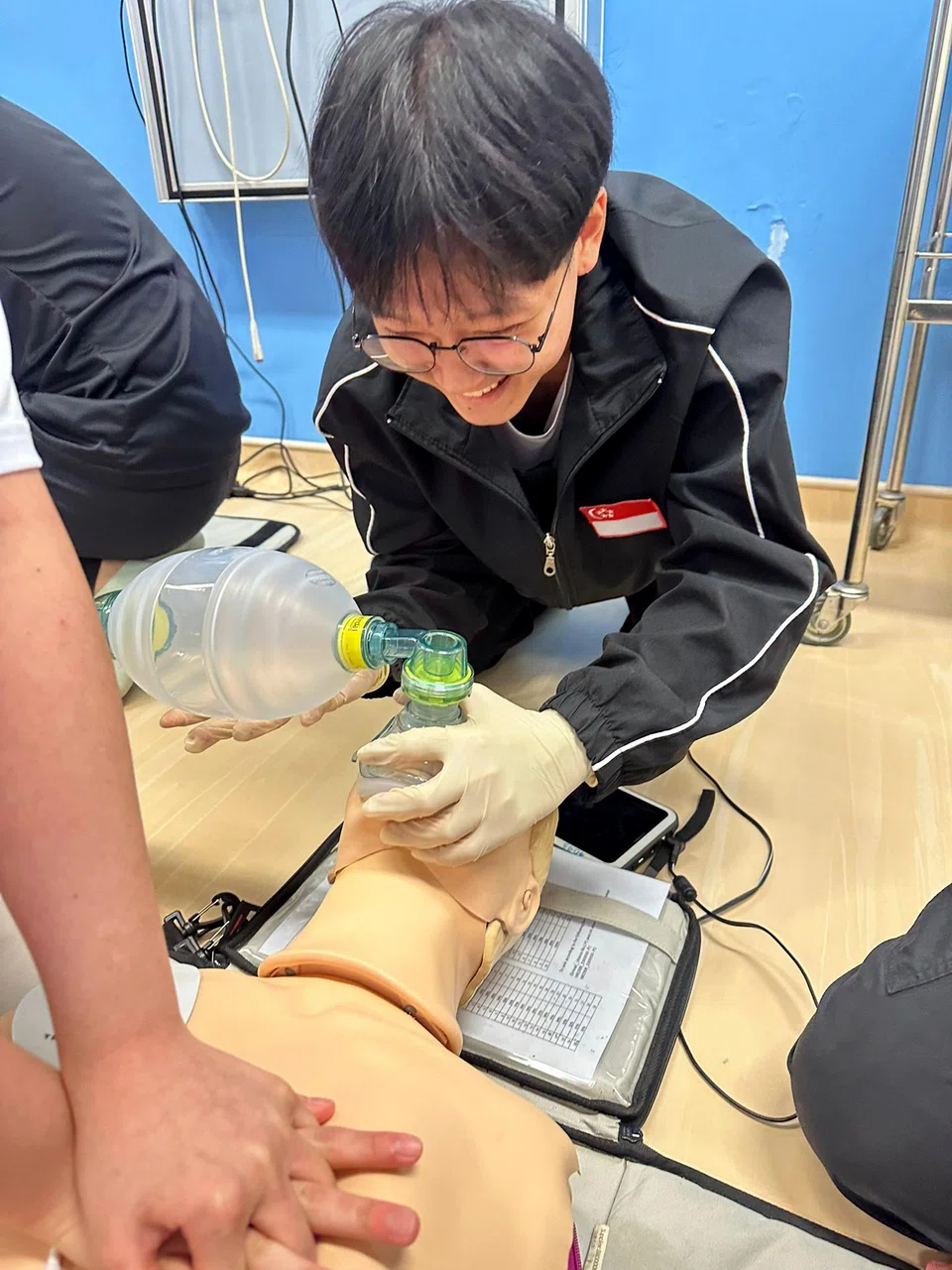Nanyang Poly student has responded to over 50 cardiac arrests via SCDF app
Elisha Tushara for The Straits Times
While most young people check their phones for messages or social media updates, 20-year-old Darryl Lee looks out for alerts to respond to emergencies.
Since signing up on the myResponder app at the age of 16, Mr Lee has responded to 70 calls for assistance, 58 of which were for cardiac arrests.
He has performed cardiopulmonary resuscitation (CPR) on people at least 50 times, said the second-year nursing student at Nanyang Polytechnic (NYP), who handled most of the cases on his own.
His mother works in an administrative role, while his father works in the service sector.
Launched in 2015 by the Singapore Civil Defence Force (SCDF), the myResponder app alerts members of the public so they can respond to cardiac arrest cases or minor fires nearby.
For his efforts, Mr Lee received his first SCDF Community Lifesaver Award in 2021. He has since received five more awards, the latest in May 2025 for helping in another cardiac arrest case.
Mr Lee became interested in helping others when he started watching local police drama series C.L.I.F. at the age of 12. The show regularly featured SCDF and police officers helping others.
His interest grew after he attended a three-day healthcare elective module at Bukit View Secondary School in 2021, when he was in Secondary 4. "It's like a study break week when you learn additional skills and knowledge... I chose something nursing-related because I had the most interest in healthcare since I was young, and knew I wanted a uniformed career."

He downloaded the myResponder app and signed up as a first responder right after the course instructor introduced it to him.
His first call came three months later in July 2021. "It was around 11am in the morning when I got the alert. The description was just a suspected cardiac arrest at a coffee shop," said Mr Lee.
Amid the Covid-19 pandemic, he wore his mask and ran all the way from his home in Bukit Batok to the location at Block 279 Bukit Batok East Avenue 3, arriving in less than five minutes.
With four responders already at the scene, including a doctor and a clinic assistant, Mr Lee helped out by taking over the bagging - squeezing a self-inflating bag to provide mechanical ventilation when someone is not breathing adequately.

His second call for help came six months later, in December 2021. This time, he arrived to find an elderly woman collapsed in her home, surrounded by worried family members.
There was no other responder to work with. He had to act alone.
Then 16, receiving a cardiac arrest alert was daunting, Mr Lee said, and he had hesitated accepting the case at first.
"I was still quite young. What if I actually did more harm than good, or the family members tried to find fault with me? But I realised that it was just my additional worries," he said.
He performed CPR on the woman for about 20 minutes until she was taken to the hospital by paramedics. Mr Lee grew more confident in his abilities after that case.
Now, whenever he gets an alert, he will readily accept the case and read the details along the way.
The only two times he did not accept cases were because they were far away, and he knew he could not reach the locations in time.
"Because every second matters, I will always try my best to sprint the fastest I can to the location, and start chest compressions earlier," he said.
His most memorable case is resuscitating an elderly man in October 2024.
Mr Lee was in a bus at about 7pm, on the way to meet friends, when he got an alert on his phone.
"Coincidentally, the location was at the next stop. So I quickly pressed the bell, alighted and ran to the location," he said.
Upon arriving at the HDB flat, he saw that a family member was already doing CPR, with guidance from SCDF over the phone.
He took over, and SCDF personnel arrived less than two minutes later. As they were transferring the man to the ambulance, Mr Lee noticed that they were no longer performing CPR on him.
An off-duty SCDF officer, who was also present, told Mr Lee that they were able to revive the man, and he could breathe on his own.
"After attending to about 30 or so cardiac arrest cases, this was the first time someone had been resuscitated. I felt like all my efforts did not go to waste," he said.
When he was an ITE student, Mr Lee arranged for his classmates to take part in SCDF's Community Emergency Preparedness Programme to pick up basic life-saving and first-aid skills.

"It was quite a good experience, according to my friends. Because some of them do want to learn, but they just don't know where to go for resources," he said.
Mr Lee's dedication has not gone unnoticed.
Mr Mike Goh, a senior lecturer at NYP's School of Health and Social Sciences and Mr Lee's mentor, said his commitment to his role as a Community First Responder has made an impression on his peers.
"Most importantly, he is emotionally resilient and adaptable under pressure, maintaining his composure in challenging situations," said Mr Goh, adding that these attributes are fundamental to patient care in both paramedic and nursing roles.
In 2025, Mr Lee received an SCDF Home Team sponsorship that provides outstanding polytechnic and ITE (Higher Nitec) students with financial support and a career in the SCDF.
Awardees get their tuition fees covered and an annual allowance.
With plans to become a paramedic, Mr Lee hopes more young people will join the pool of responders, and pick up basic life-saving skills.

"If more of us step up, it means a faster response time and better chances of survival for people in need," he said.
"I really try to respond to every cardiac arrest I can to give the family members some hope. Because if something were to happen to my friends or my family, I hope someone nearby can step up and help."
